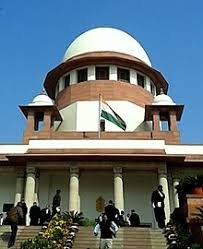The case originated from the appellant’s income tax assessment for the Assessment Year 2002-03, where they claimed deductions under Section 80-HHC (for profits from export business) and Section 80-IA (for profits from industrial undertakings).
Reassessment proceedings were initiated, and the tax authorities, relying on prior judgments, challenged the appellant’s method of claiming these deductions23. The appellant’s appeals were successively dismissed by the Commissioner of Income Tax (Appeals), the Income Tax Appellate Tribunal (ITAT), and the High Court.
Law Involved
The key legal provisions under scrutiny are from the Income Tax Act, 1961:
- Section 80-HHC: This section provides for deductions in respect of profits retained from export business. The source includes a detailed excerpt of this section, specifying how the deduction is computed based on export turnover and total turnover. It also sets out the percentage of deduction allowed for different assessment years.
- Section 80-IA: This section deals with deductions for profits and gains derived from industrial undertakings or enterprises engaged in infrastructure development, among others.
- Sub-section (9) of Section 80-IA: This critical sub-section stipulates that if profits and gains of an undertaking are claimed and allowed as a deduction under Section 80-IA, the same amount “shall not be allowed as a deduction under any other provisions of this Chapter” (Chapter VI-A), and the deduction should not exceed the profits of the eligible business. This provision was introduced effective 1st April 1999.
- Section 80-IB: Similar to 80-IA, this section also provides for deductions from certain industrial undertakings.
- Chapter VI-A (Sections 80-C to 80-U): This chapter encompasses various deductions from gross total income.
Reasoning
The Supreme Court meticulously examined the interplay between Section 80-IA(9) and Section 80-HHC, particularly focusing on how “gross total income” should be interpreted and how deductions should be computed when both sections apply:
- Preventing Double Deduction: The fundamental principle driving the interpretation was to prevent the assessee from claiming deductions on the same portion of profits twice.
- Interpretation of Section 80-IA(9): The Court clarified that Section 80-IA(9) acts as a restriction, stipulating that if a certain amount of profits is allowed as a deduction under Section 80-IA, that same amount cannot be allowed again under other provisions within Chapter VI-A, such as Section 80-HHC. It noted that this sub-section does not affect the overall computation of the gross total income, but rather restricts subsequent deductions on the same income.
- Gross Total Income for 80-HHC Computation: The Court stated that for the purpose of computing the deduction under Section 80-HHC, the “gross total income” should be considered as the income before allowing any deduction under Section 80-IA or other sections of Chapter VI-A. This implies that the formula for 80-HHC (Section 80-HHC(3)) is to be applied to the pre-80-IA gross total income.
- Aggregate Cap on Deductions: Crucially, the Supreme Court reconciled previous conflicting views by establishing that while 80-HHC is calculated on the gross total income before 80-IA deduction, the aggregate of the deductions allowed under Section 80-HHC and Section 80-IA must not exceed the actual profits and gains of the eligible business or undertaking1214. This ensures that the total deduction claimed does not surpass the true profits from which these deductions are derived.
- Rejection of Anomalous Computation: The Court highlighted that the Revenue’s contention, which would lead to an artificial reduction of gross total income before applying the 80-HHC formula, was illogical and would result in an “anomalous” and “unacceptable” figure for the actual profits. It emphasized that the computed figures should reflect the “actual and true figure” of the gross total income or profit.
- Prior Judgments: The Court referenced earlier judgments like Associated Capsules (P) Ltd. v. Deputy Commissioner of Income Tax and Great Eastern Exports v. Commissioner of Income Tax, which had presented differing interpretations, and ultimately affirmed a position that allows for computation while preventing excessive deductions.
Holding
The Supreme Court’s judgment effectively clarifies the method for calculating tax deductions when an assessee is eligible for benefits under both Section 80-IA and Section 80-HHC1012:
- The formula for calculating the deduction under Section 80-HHC(3) should be applied to the gross total income before any deduction is made under Section 80-IA.
- However, the Court held that the cumulative amount of deductions claimed under Section 80-HHC and Section 80-IA must not, in total, exceed the actual profits and gains of the eligible business or undertaking.
This ensures that while the computation for each deduction may start from the full gross total income, the overall benefit derived from these sections is capped at the true profitability of the business, thereby preventing taxpayers from claiming deductions beyond their actual eligible profits.
Shital Fibers Limited V. Commissioner Of Income Tax
Supreme Court: 2025 INSC 743: (DoJ 20-05-2025)








